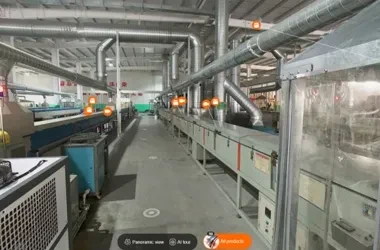Flexible Waterproof Rubber Strips for Effective Sealing Solutions
The Importance of Rubber Waterproofing Strips
In the realm of construction and home improvement, waterproofing plays a crucial role in ensuring the durability and longevity of buildings. One of the often-overlooked yet vital components in waterproofing systems is rubber waterproofing strips. These strips are essential not only for safeguarding structures against water intrusion but also for enhancing the overall integrity of various installations.
What Are Rubber Waterproofing Strips?
Rubber waterproofing strips are flexible pieces made from natural or synthetic rubber, designed to create a watertight seal between surfaces. They are available in various shapes, sizes, and thicknesses, allowing them to adhere to a wide range of applications, from windows and doors to roofs and basement walls. The primary function of these strips is to prevent water from penetrating through seams and joints, thereby providing essential protection against moisture-related damage.
Advantages of Rubber Waterproofing Strips
1. Durability One of the standout features of rubber waterproofing strips is their robust nature. Unlike some traditional sealing materials that can degrade or lose effectiveness over time, rubber strips exhibit impressive resistance to wear and tear, UV rays, and extreme temperatures. This durability ensures long-lasting performance in diverse environmental conditions.
2. Flexibility Rubber waterproofing strips are highly flexible, making them easy to install on uneven surfaces or areas that require a tighter seal. This characteristic also helps them accommodate the natural movements of buildings, such as settling or expansion due to temperature changes, without compromising their sealing capabilities.
rubber waterproofing strips

3. Cost-Effectiveness Investing in rubber waterproofing strips can be a cost-effective solution in the long run. By preventing water damage, these strips can save homeowners and builders from costly repairs, mold remediation, and structural damages that may arise from inadequate waterproofing.
4. Ease of Installation Another compelling benefit of rubber waterproofing strips is their straightforward installation process. Most strips come with adhesive backing, allowing for quick and easy application. This feature is particularly advantageous for DIY enthusiasts looking to tackle waterproofing projects without needing specialized tools or extensive training.
5. Versatility Rubber waterproofing strips can be used in a variety of settings and applications. They are commonly employed in residential, commercial, and industrial constructions, making them a versatile choice for a broad spectrum of needs. From sealing the edges of windows to providing a protective barrier on roofs, these strips are adaptable to many environments.
Applications of Rubber Waterproofing Strips
The application of rubber waterproofing strips is diverse. In residential construction, they are often used around windows and doors to prevent leaks during heavy rains. In commercial settings, these strips can be found in flooring installations, helping to protect against water damage in areas prone to spills or moisture, such as kitchens and bathrooms. Additionally, they play a crucial role in roofing systems, where they seal seams and joints to avoid water penetration.
Conclusion
In conclusion, rubber waterproofing strips are an indispensable component of any comprehensive waterproofing strategy. Their durability, flexibility, cost-effectiveness, ease of installation, and versatility make them a top choice for both professionals and DIYers alike. As the importance of proactive waterproofing becomes increasingly recognized in the construction industry, the use of rubber waterproofing strips will undoubtedly continue to grow. By incorporating these reliable strips into your building projects, you can protect your investment from the damaging effects of water intrusion and ensure a safe, dry environment for years to come.
-
Under Door Draught Stopper: Essential ProtectionNewsJul.31,2025
-
Garage Door Seal and Weatherstrips for ProtectionNewsJul.31,2025
-
Edge Banding Tape for Perfect EdgesNewsJul.31,2025
-
Table Corner Guards and Wall Corner ProtectorsNewsJul.31,2025
-
Stair Nose Edging Trim and Tile Stair SolutionsNewsJul.31,2025
-
Truck Bed Rubber Mats for Pickup BedsNewsJul.31,2025
-
Window Weather Stripping for Noise ReductionNewsJul.29,2025